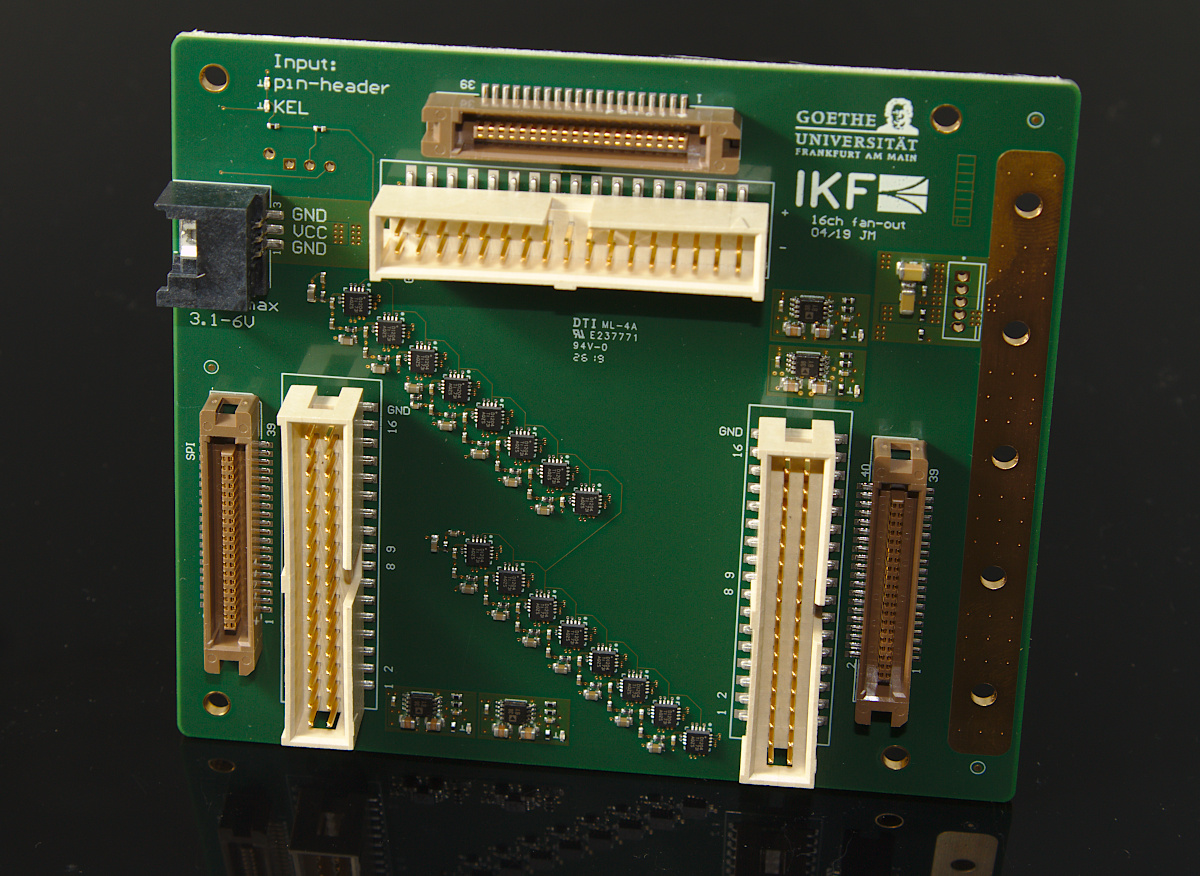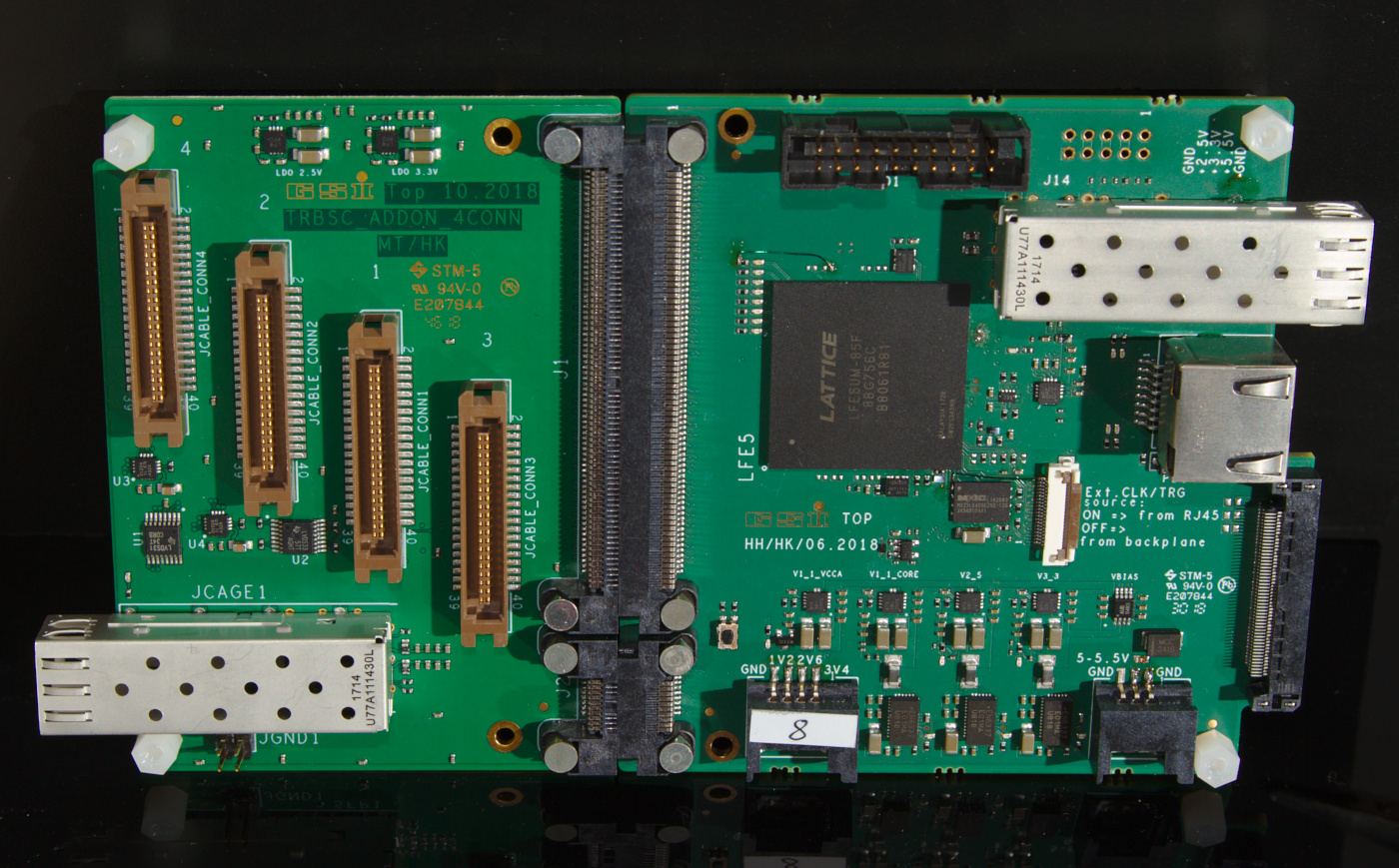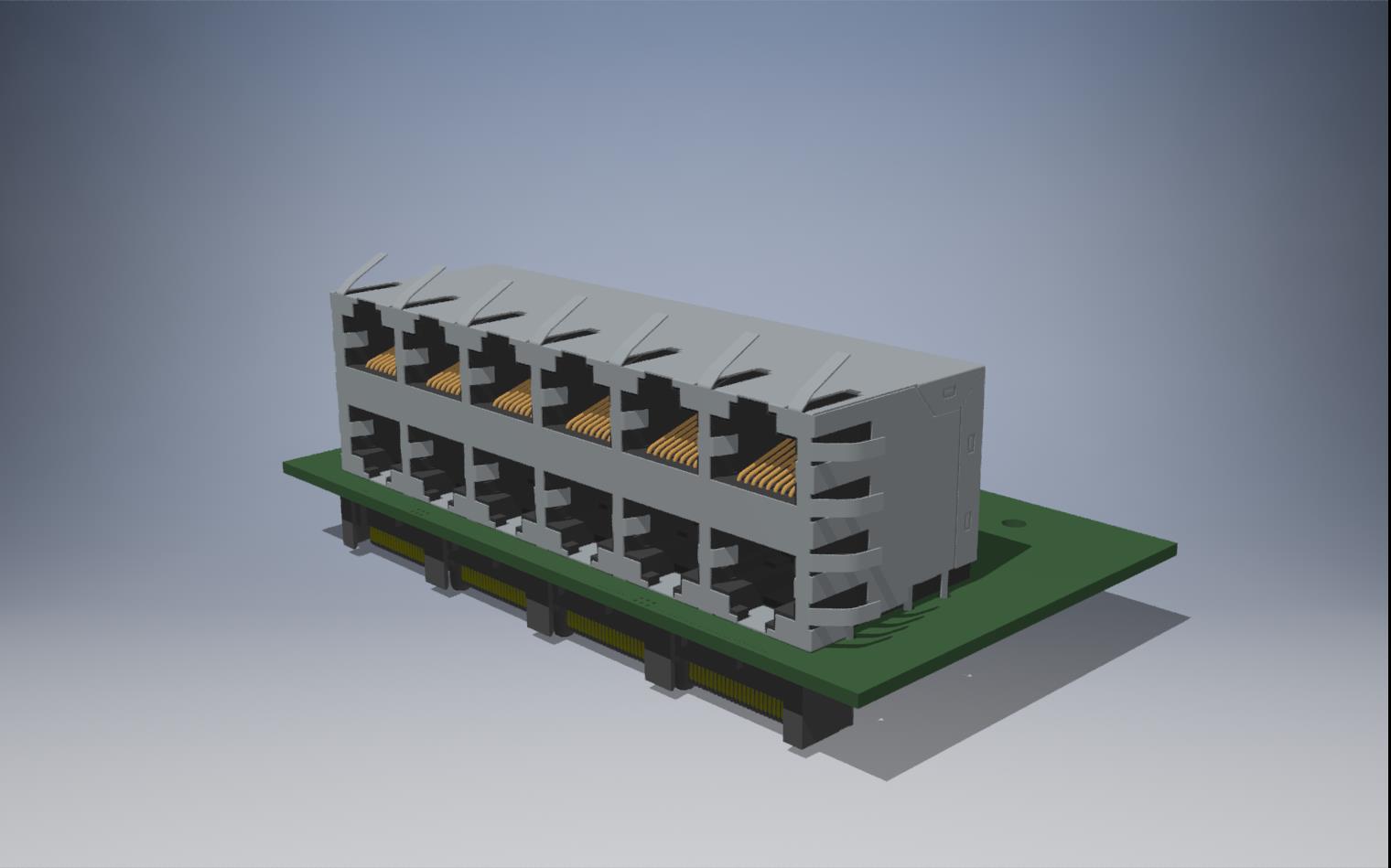Mux-Fanout-Board
 A 16 channel 1:4 fan-out board, compatible to our usual 40-pin signal cables. The input is either on a 40-pin connector or on pin-header. Outputs are in parallel on two 40-pin connectors and 2 pin-headers.
A 16 channel 1:4 fan-out board, compatible to our usual 40-pin signal cables. The input is either on a 40-pin connector or on pin-header. Outputs are in parallel on two 40-pin connectors and 2 pin-headers.
 A 16 channel 1:4 fan-out board, compatible to our usual 40-pin signal cables. The input is either on a 40-pin connector or on pin-header. Outputs are in parallel on two 40-pin connectors and 2 pin-headers.
A 16 channel 1:4 fan-out board, compatible to our usual 40-pin signal cables. The input is either on a 40-pin connector or on pin-header. Outputs are in parallel on two 40-pin connectors and 2 pin-headers.
 The latest family member of our TRB group: Trb5sc featuring a single ECP5 FPGA for up to 32 high-resolution TDC channels or 64 general purpose LVDS I/O.
The form factor is new, including an "inline" AddOn board (here: a new "4conn" AddOn). Together with the AddOn the form factor is the same as a TRB3sc without AddOn and the boards fit into the same crates.
The latest family member of our TRB group: Trb5sc featuring a single ECP5 FPGA for up to 32 high-resolution TDC channels or 64 general purpose LVDS I/O.
The form factor is new, including an "inline" AddOn board (here: a new "4conn" AddOn). Together with the AddOn the form factor is the same as a TRB3sc without AddOn and the boards fit into the same crates.
 This RJ45 AddOn board provides 12 standard network cable sockets allowing to transmit the LVDS signals via shielded cables (CAT 6, S/FTP). This reduces crosstalk and signal edge distortions on neighboring signal lines, especially for longer cables.
This AddOn board uses the PADIWA 4-conn I/O schematics. The SPI lines are either available via the RJ45 sockets or on the a separate 2x10-pin connector. Furthermore, a 3.3V and 6V connection is available via a 2x2-pin connector.
This RJ45 AddOn board provides 12 standard network cable sockets allowing to transmit the LVDS signals via shielded cables (CAT 6, S/FTP). This reduces crosstalk and signal edge distortions on neighboring signal lines, especially for longer cables.
This AddOn board uses the PADIWA 4-conn I/O schematics. The SPI lines are either available via the RJ45 sockets or on the a separate 2x10-pin connector. Furthermore, a 3.3V and 6V connection is available via a 2x2-pin connector.
The new power switch module allows you to switch power to any other hardware remotely. The board can be equipped with both our standard power connectors and each channel is able to stand 50 V or 50 W or 5 A, whatever is reached first. Remote control is possible via USB or any available UART connection, for example via TrbNet and FPGA on a TRB3. The boards can be cascaded to "any" number of channels on a single control interface, as long as the power consumption of the board itself can be met. Features include current measurement on each output and programmable over current protection thresholds.
A brief documentation exists.

And here it is, the complete module for the Hades and CBM RICH detectors: 6 64-channel MC-PMTs and all electronics for read-out
An extensive description of the features can be found on a poster, presented at TWEPP 2016.
Photo: Gabi Otto, GSI